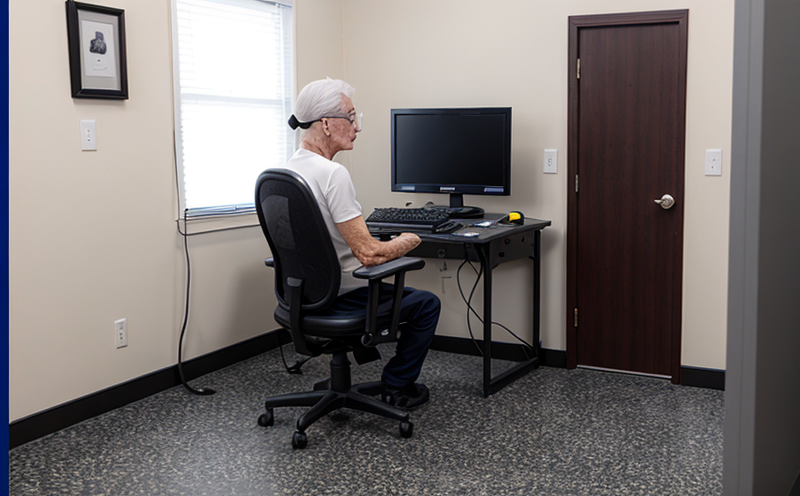Ageing simulation of coated fabrics with UV and humidity exposure
The ageing simulation of coated fabrics under UV and humidity conditions is a critical process within the textile testing sector. This service focuses on replicating real-world environmental stressors to assess the durability, longevity, and performance of coated fabrics used in various industries.
Coated fabrics are widely employed across numerous sectors including automotive, aerospace, construction, and marine environments where prolonged exposure to UV radiation and moisture can significantly impact material integrity. This service utilizes advanced simulation techniques to provide accurate data on how these materials withstand such conditions over extended periods.
The testing process involves exposing the coated fabric samples to controlled levels of ultraviolet light (UV), similar to sunlight, and varying humidity levels that mimic different environmental conditions. The aim is to accelerate potential degradation processes so that manufacturers can identify any issues early in the product lifecycle.
During this ageing simulation, it's essential to maintain precise control over temperature, relative humidity, and UV exposure time. These parameters are set according to industry standards such as ISO 14309-2 for accelerated weathering tests on coated fabrics. Compliance with these standards ensures accurate results that reflect real-world scenarios.
Preparation of the test samples is crucial; they need to be cut into standard sizes and shapes, ensuring consistency across all specimens. After preparing the samples, they are placed inside a climate chamber equipped with UV lamps designed to simulate natural sunlight. The duration of exposure varies depending on the specific requirements but generally ranges from several days up to weeks.
The testing apparatus used for this service includes sophisticated climate chambers capable of maintaining strict temperature and humidity levels alongside UV radiation sources. These systems are calibrated regularly against international standards like ASTM G154 and ISO 12371-6 ensuring the accuracy of each test run.
Upon completion of the ageing simulation, the samples undergo detailed inspection for any signs of deterioration such as discoloration, cracking, or loss in tensile strength. Results are documented meticulously including photographs taken at various stages during exposure and final measurements made immediately after removal from the chamber.
The outcome provides valuable insights into material performance under extreme conditions allowing manufacturers to make informed decisions about product design improvements if necessary. This service supports compliance with regulatory requirements while also offering competitive advantages by identifying potential weaknesses early on in development cycles.
Industry Applications
| Industry Sector | Application |
|---|---|
| Aerospace | Ensuring durability of coated fabrics used in aircraft interiors. |
| Automotive | Testing upholstery materials for resistance to UV and moisture. |
| Construction | Evaluating the longevity of waterproof membranes used on roofs. |
| Marine | Assessing sails, ropes, and other components exposed to saltwater environments. |
Competitive Advantage and Market Impact
Implementing this ageing simulation service offers several key benefits for businesses operating in the textile industry. By accurately predicting how materials will perform under harsh environmental conditions, companies can enhance their product quality assurance processes.
This leads to reduced warranty costs associated with premature failure of products due to material defects or poor design choices. Additionally, early detection of weaknesses allows manufacturers to innovate and improve future generations of products more efficiently.
The ability to comply fully with relevant international standards also strengthens a company's reputation among clients who prioritize sustainability and quality. For example, meeting ISO 14309-2 can demonstrate commitment to environmental responsibility which is increasingly important in today’s marketplaces.
In terms of competitive advantage, being able to offer reliable data on material performance under simulated ageing conditions gives companies a strategic edge over competitors who may not have access to such sophisticated testing facilities. This capability positions them as leaders in sustainable manufacturing practices within their respective markets.
Use Cases and Application Examples
- Evaluating the UV resistance of sun protection fabrics for outdoor clothing.
- Testing waterproofing properties of roof membranes exposed to rain and snow.
- Assessing durability of marine ropes subjected to constant exposure to seawater.
- Determining the effectiveness of automotive upholstery materials against UV fading over time.





